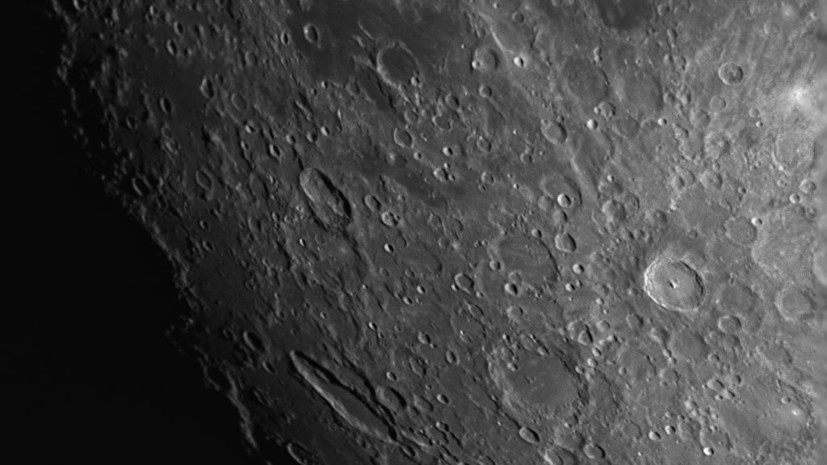Scientists from the Laboratory of Comparative Planetology of the Institute of Geochemistry and Analytical Chemistry named after.
IN AND.
Vernadsky of the Russian Academy of Sciences (GEOKHI RAS) together with a Chinese colleague found that the formation of the lunar relief did not depend on the influence of the Sun.
The key factor in its formation was the bombardment of the Moon by meteorites.
This was reported to RT by the press service of GEOKHI RAS.
The research results were published in the journal Planetary and Space Science.
As the authors of the work noted, craters located on the dark side of the Moon are “cold traps.”
As a result of meteorite impacts on the surface of the Moon, the water contained in them evaporates, this vapor settles in the form of ice in the lunar soil - regolith - at the bottom of the resulting craters.
Such craters are of great interest to scientists, since water ice could in the future serve as a source of water for lunar bases and become a raw material for producing hydrogen, which can be used as fuel for future flights from the Moon to other objects in the Solar System.
"Lunokhod-2" - the second Soviet lunar remotely controlled self-propelled vehicle (planet rover)
RIA News
At the same time, the south pole of the Moon is considered the most attractive for study, where the little-explored Aitken Basin is also located - the largest and oldest known lunar object.
However, according to scientists, lunar reconnaissance missions require an understanding of the lunar surface morphology and surface geological processes.
In a new study, scientists looked at images of the shadowed floor of the south polar crater Shoemaker obtained from the US Lunar Reconnaissance Orbiter spacecraft.
Experts built a digital model and, on its basis, compared the surface relief of Shoemaker with the terrain in two regularly illuminated areas of the Moon - the area of operation of the Soviet Lunokhod-2 spacecraft and the surface of the continental plain at the landing site of the American Apollo 16 mission.
As a result, it turned out that the reliefs of the darkened crater and the illuminated ones are almost identical.
Moreover, they almost do not differ in depth and diameter.
According to the authors of the work, this means that daily temperature changes do not affect the surface of the Moon.
“Within the permanently shaded area of the surface, we did not detect morphological features that could be a consequence of the lack of daily temperature variations, which suggests that their role in surface geological processes on the Moon is insignificant,” the study authors note in their scientific paper.
According to scientists, the main factor in the formation of the unusual topography of the entire lunar surface is the bombardment of the Earth's satellite by meteorites and local seismic vibrations - moonquakes.

